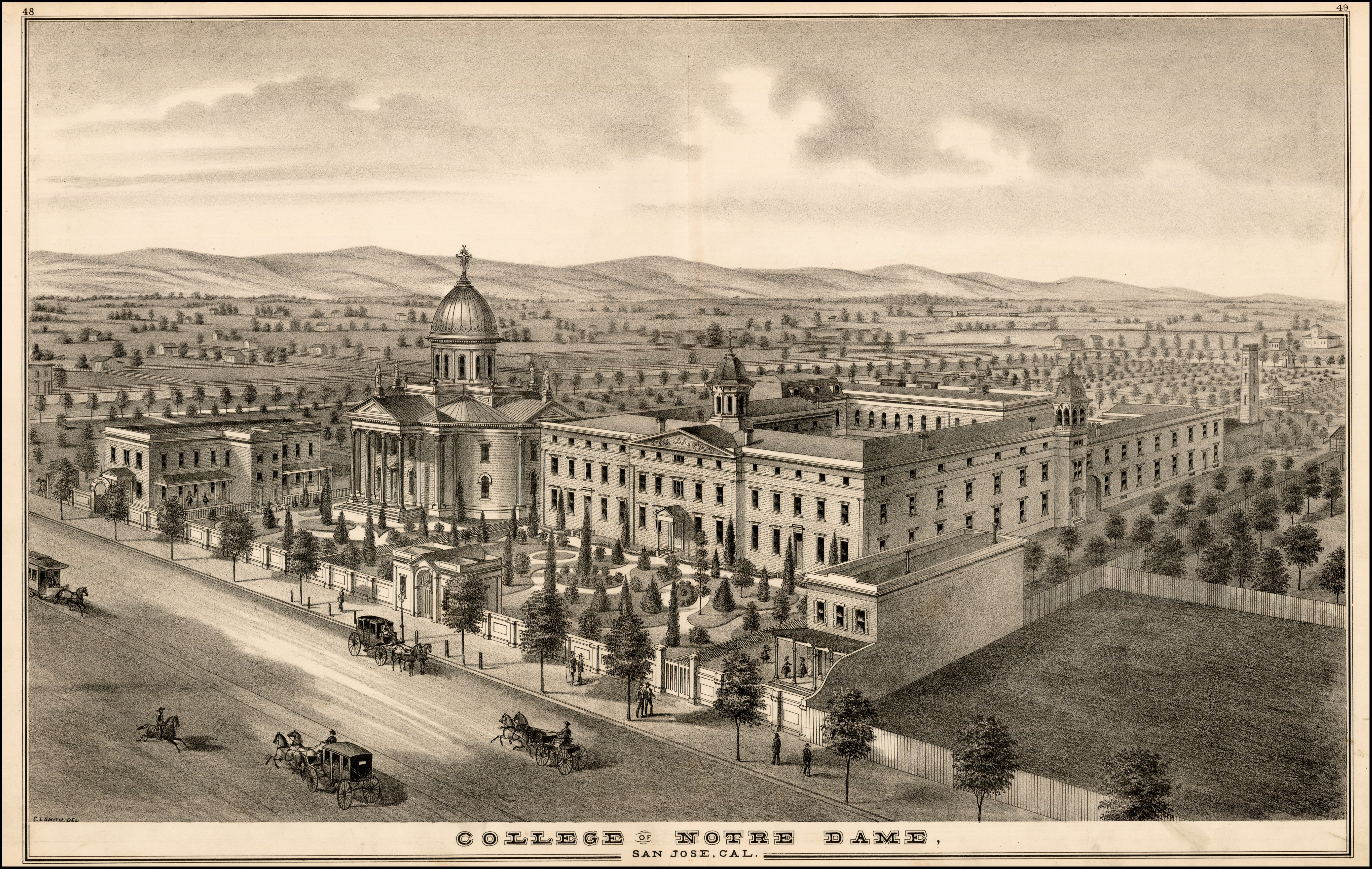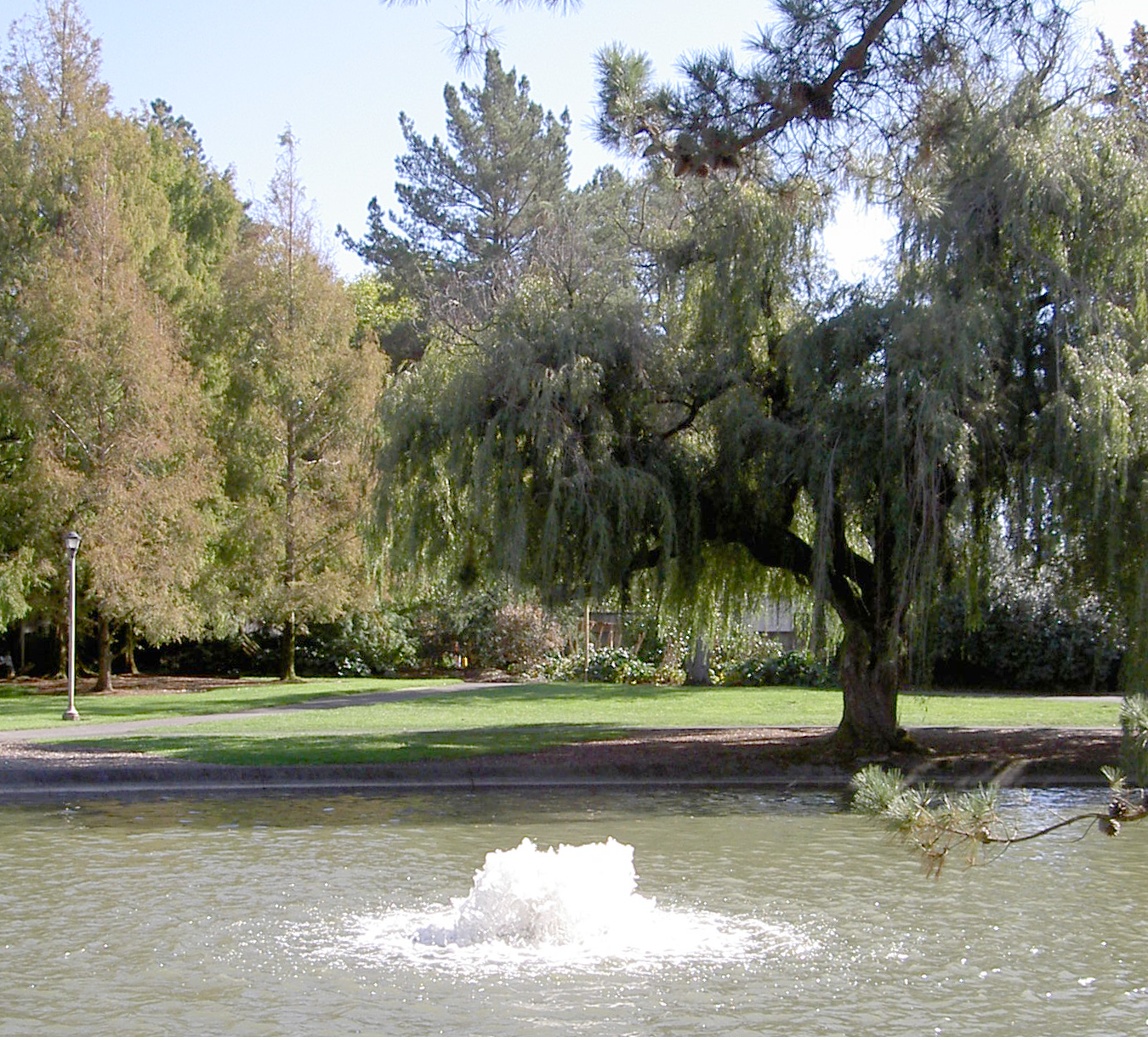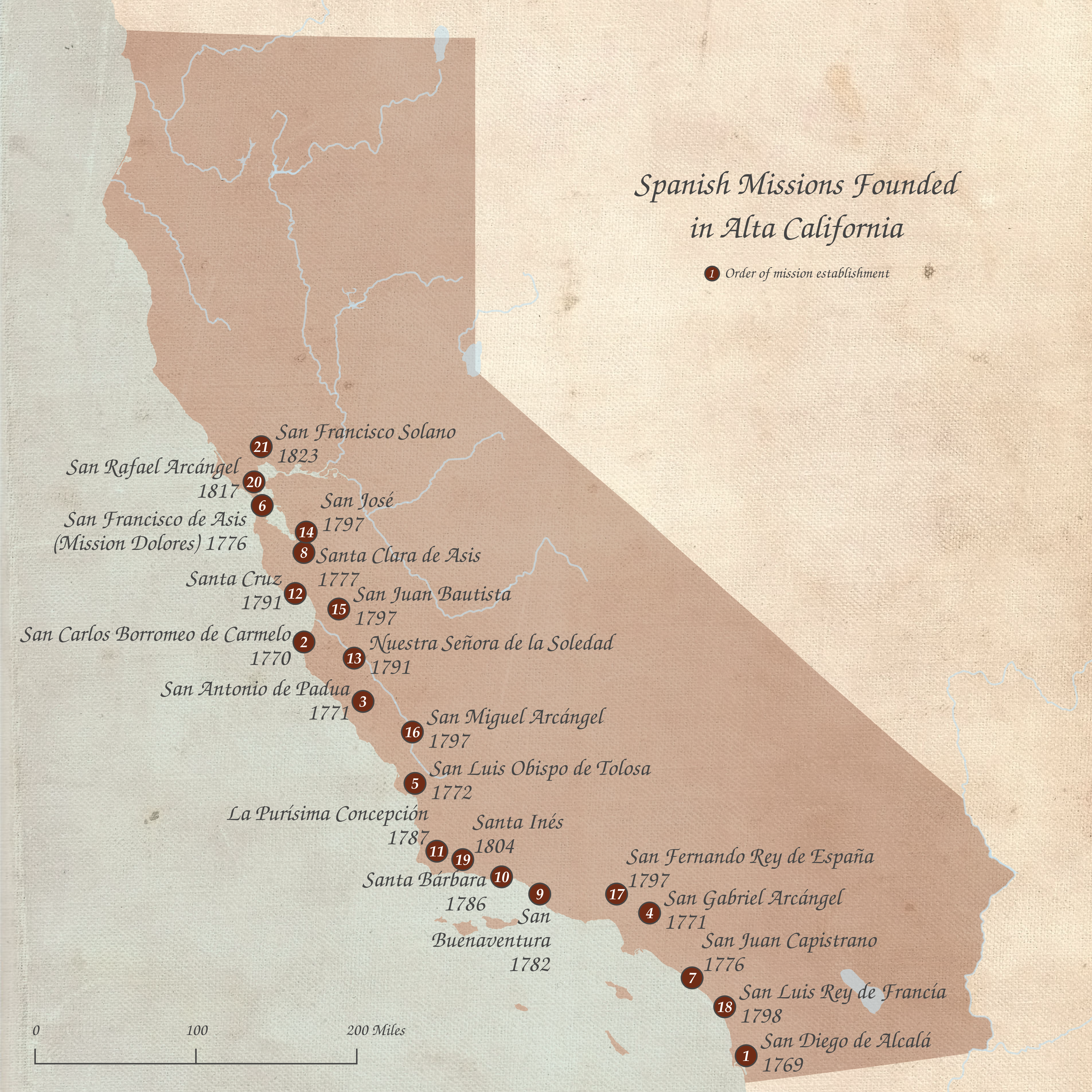|
History Of Education In California
The History of education in California covers public and private schools and higher education since the colonial era. Long-term trends Colonial era In Alta California (that is, the Spanish and Mexican colony before 1848), the cultural was oral; outside the military written materials were rare. In the Army, a prerequisite for promotion above the rank of corporal was literacy. The Spanish policy at the time, as a means of controlling their citizens, was to oppose popular education. The first school was opened in 1795 by a retired sergeant, in San Jose. Small schools taught by retired soldiers operated from time to time. José Antonio Carrillo is one of the few school teachers known by name. Governor Pablo Vicente de Solá (1815-1821) planned to use his own wealth to bring in two Spanish academics to establish a school in Monterey. After several weeks they concluded life in California as unbearable and left. In 1829, throughout Alta California, there were 339 students in 11 primary ... [...More Info...] [...Related Items...] OR: [Wikipedia] [Google] [Baidu] |
San Jose State University
San José State University (San Jose State or SJSU) is a Public university, public research university in San Jose, California. Established in 1857, SJSU is the List of oldest schools in California, oldest public university on the West Coast of the United States, West Coast and the founding campus of the California State University (CSU) system. The university, alongside the University of California, Los Angeles has academic origins in the historic normal school known as the California State Normal School. Located in downtown San Jose, the SJSU main campus is situated on , or roughly 19 square blocks. As of spring 2023, SJSU offers 150 bachelor's degree programs, 95 master's degrees, 5 doctorate, doctoral degrees, 11 different credential programs, and 42 certificates. SJSU is accredited by the WASC Senior College and University Commission. The university is Carnegie Classification of Institutions of Higher Education, classified among "R2: High Research Spending and Doctorate Pro ... [...More Info...] [...Related Items...] OR: [Wikipedia] [Google] [Baidu] |
Sonoma State University
Sonoma State University (SSU, Sonoma State, or Sonoma) is a public university in Sonoma County, California, United States. It is part of the California State University system. Sonoma State offers 92 bachelor's degree programs, 19 master's degree programs, and 11 teaching credentials. The university is a Hispanic-serving institution. History Founding Sonoma State College was established by the California State Legislature in 1960 to be part of the California State College system, with significant involvement of the faculty from San Francisco State University. As with all California State Colleges, Sonoma State later became part of the California State University system. Sonoma opened for the first time in 1961, with an initial enrollment of 250 students. Classes offered took place in leased buildings in Rohnert Park where the college offered its first four-year Bachelor of Arts degree in Primary Education, Elementary Education. The small first graduating class received their ... [...More Info...] [...Related Items...] OR: [Wikipedia] [Google] [Baidu] |
Loyola High School (Los Angeles)
Loyola High School is a private, Roman Catholic, college-preparatory high school for boys in Los Angeles, California, United States. It was established in 1865 and is part of the Society of Jesus. It is the oldest continuously run educational institution in Southern California. History Loyola High School of Los Angeles is the region's oldest continuing educational institution, pre-dating the Los Angeles public school and the University of California systems. The school began in the downtown plaza Lugo adobe in 1865 as Saint Vincent's College at the behest of Archdiocese of Los Angeles Bishop Thaddeus Amat. After relocating to Hill Street in 1869 and to Grand Avenue in 1889, the Vincentian fathers ceded control of the school to the Society of Jesus in 1911, and it relocated to Avenue 52 in Highland Park as the prep school Los Angeles College. In 1917, the school moved to its current location on Venice Boulevard after the copper magnate and Irish philanthropist Thomas P. Hig ... [...More Info...] [...Related Items...] OR: [Wikipedia] [Google] [Baidu] |
Californios
Californios (singular Californio) are Californians of Spaniards, Spanish descent, especially those descended from settlers of the 17th through 19th centuries before California was annexed by the United States. California's Spanish language in California, Spanish-speaking community has resided there since 1683. Alongside the Tejanos of Texas and Hispanos of New Mexico, Nuevomexicanos of New Mexico and Colorado, Californios are part of the larger group of descendants of Spaniards in the United States, which has inhabited the American Southwest and the U.S. West Coast, West Coast since the 16th century. The term ''Californio'' (historical, regional Spanish for 'Californian') was originally applied by and to the Spanish-speaking residents of ''Las Californias'' during the periods of Spanish California and Mexican California, between 1683 and 1848. The first Californios were the children of the early Spanish colonization of the Americas, Spanish military expeditions into northern rea ... [...More Info...] [...Related Items...] OR: [Wikipedia] [Google] [Baidu] |
College Of Notre Dame In San Jose Cal 1876
A college (Latin: ''collegium'') may be a tertiary educational institution (sometimes awarding degrees), part of a collegiate university, an institution offering vocational education, a further education institution, or a secondary school. In most of the world, a college may be a high school or secondary school, a college of further education, a training institution that awards trade qualifications, a higher-education provider that does not have university status (often without its own degree-awarding powers), or a constituent part of a university. In the United States, a college may offer undergraduate programs – either as an independent institution or as the undergraduate program of a university – or it may be a residential college of a university or a community college, referring to (primarily public) higher education institutions that aim to provide affordable and accessible education, usually limited to two-year associate degrees. The word "college" is generally ... [...More Info...] [...Related Items...] OR: [Wikipedia] [Google] [Baidu] |
Salinas, California
Salinas (; Spanish language, Spanish for "Salt pan (geology), Salt Flats") is a city in the U.S. state of California and the county seat of Monterey County, California, Monterey County. With a population of 163,542 in the 2020 Census, Salinas is the most populous city in Monterey County. Salinas is an urban area located along the eastern limits of the Monterey Bay Area, lying just south of the San Francisco Bay Area and southeast of the mouth of the Salinas River (California), Salinas River. The city is located at the mouth of the Salinas Valley, about from the Pacific Ocean, and it has a climate more influenced by the ocean than the interior. Salinas serves as the main business, governmental, and industrial center of the region. The marine climate is ideal for the floral industry, grape vineyards, and vegetable growers. Salinas is known as the "Salad Bowl of the World" for its large, vibrant agriculture industry. It was the hometown of writer and Nobel Prize in Literature, No ... [...More Info...] [...Related Items...] OR: [Wikipedia] [Google] [Baidu] |
William Edward Petty Hartnell
William Edward Petty Hartnell (April 24, 1798 – February 2, 1854), later known by his Spanish name Don Guillermo Arnel, was a merchant, schoolmaster, and government official in California. He arrived in California in 1822 as a trader, where he married into the prominent Guerra family of California and became a Mexican citizen. He held several public roles during the Mexican era and after the American Conquest of California, notably serving as the official translator at the Monterey Constitutional Convention. Early life William Petty Hartnell was born to a middle-class family in Lancaster, England in 1798. His father died in 1807 when he was eight years old. His mother, who was from an affluent Westmorland family. Hartnell attended the College of Commerce in Bremen, Germany and then went to Chile in 1819 to work in the Santiago office of John Begg & Co., a firm where another uncle, Edward Petty, had helped him secure a job. With the waning of Spanish power in the region, the Sc ... [...More Info...] [...Related Items...] OR: [Wikipedia] [Google] [Baidu] |
Pablo Vicente De Solá
Pablo Vicente de Solá (1761–1826) was a Spanish officer and the twelfth and last Spanish colonial governor of Alta California (1815-1822). He was born in Mondragón, Gipuzkoa, Spain. Land grants Solá granted in 1821 the Rancho Rincón de los Bueyes to Bernardo Higuera and Cornelio López. It lay in present-day Los Angeles County, California, encompassing contemporary Cheviot Hills, Rancho Park, the northeast extension of Culver City, and a small section of Baldwin Hills with Ballona Creek. He explored the valleys of California to help select possible sites on which to build new Spanish missions. Other Spanish land grants of Solá include: * Rancho La Puente * Rancho El Conejo * Rancho Los Tularcitos * Rancho Bolsa del Potrero y Moro Cojo * Rancho San Antonio (Peralta) * Rancho Vega del Río del Pájaro Independent Mexico Solá served under Spanish colonial rule until Mexico became independent in 1821. Although California opposed Mexican rule, transfer of Spanish Calif ... [...More Info...] [...Related Items...] OR: [Wikipedia] [Google] [Baidu] |
José Antonio Carrillo
Captain José Antonio Ezequiel Carrillo (1796–1862) was a Californio politician, ranchero, and signer of the California Constitution in 1849. He served three terms as Alcalde of Los Angeles (mayor). History A member of the prominent Carrillo family of California, he was the son of the Spanish José Raimundo Carrillo, and brother of Carlos Antonio Carrillo, governor of Alta California, himself serving three non-consecutive terms as ''alcalde'' (a combination mayor/judge) of Pueblo de Los Angeles between 1826 and 1834. José Antonio Carillo married María Estéfana Pico (1806–) in 1823, and after her death, Jacinta Pico (1815–) in 1842; both women were sisters of prominent Californios Pío Pico and Andrés Pico. He built Carrillo House in Los Angeles, fronting the historic plaza, with wings extending back on Main Street. José Antonio Carrillo was the rancho grantee of Rancho Las Posas in 1834, in present-day Ventura County, California, and the Island of Sant ... [...More Info...] [...Related Items...] OR: [Wikipedia] [Google] [Baidu] |
Alta California
Alta California (, ), also known as Nueva California () among other names, was a province of New Spain formally established in 1804. Along with the Baja California peninsula, it had previously comprised the province of , but was made a separate province in 1804 (named ). Following the Mexican War of Independence, it became a territory of First Mexican Empire, Mexico in April 1822 and was renamed in 1824. The territory included all of the present-day U.S. states of California, Nevada, and Utah, and parts of Arizona, Wyoming, and Colorado. The territory was with Baja California Territory, Baja California (as a single ) in Mexico's 1836 ''Siete Leyes'' (Seven Laws) constitutional reform, granting it more autonomy. That change was undone in 1846, but rendered moot by the outcome of the Mexican–American War in 1848, when most of the areas formerly comprising Alta California Mexican Cession, were ceded to the U.S. in Treaty of Guadalupe Hidalgo, the treaty which ended the war. In ... [...More Info...] [...Related Items...] OR: [Wikipedia] [Google] [Baidu] |
California State University Channel Islands
California State University Channel Islands (CSUCI, CSU Channel Islands) is a public university in Ventura County, California. Located near the city of Camarillo, it opened in 2002 as the 23rd campus in the California State University system. CSUCI is located on the Central Coast of California, at the intersection of the Oxnard Plain and northernmost edge of the Santa Monica Mountains range. The Channel Islands are nearby where the university operates a scientific research station on Santa Rosa Island. The university is a Hispanic-serving institution. Channel Islands offers 63 bachelor's degree programs, 12 master's degree programs, and 4 teaching credentials. In the fall of 2020, the university enrolled 6,943 undergraduate and postgraduate students. In the fall of 2020, the university had 425 faculty, of whom 153 (or 36%) were on the tenure track. History The first buildings of the campus were built in 1934 as part of President Franklin D. Roosevelt's New Deal during the G ... [...More Info...] [...Related Items...] OR: [Wikipedia] [Google] [Baidu] |
California State University, Monterey Bay
California State University, Monterey Bay (CSUMB or Cal State Monterey Bay) is a public university located in Monterey County, California, United States. The main campus is situated on the site of the former military base Fort Ord, spanning the cities of Seaside and Marina, approximately one mile inland from Monterey Bay along the Central Coast of California. CSUMB also maintains locations in the cities of Monterey and Salinas. Founded in 1994, CSUMB is part of the California State University system and is accredited by the WASC Senior College and University Commission. The university is designated as a Hispanic-Serving Institution. History CSUMB was founded in 1994 with a student enrollment of 654 students. Classes began August 28, 1995. The founding president was Peter Plympton Smith. It was the 22nd campus in the California State University system. The university offers 23 bachelor's degrees, 7 master's degrees, and teaching credentials. As of the fall 2020 semester, th ... [...More Info...] [...Related Items...] OR: [Wikipedia] [Google] [Baidu] |










